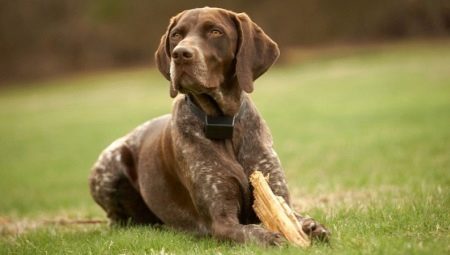The breed of the dog with the complex name Kurzhaar was bred in the 19th century. It is especially popular with hunters, as this dog is an excellent companion and assistant in the game corral.
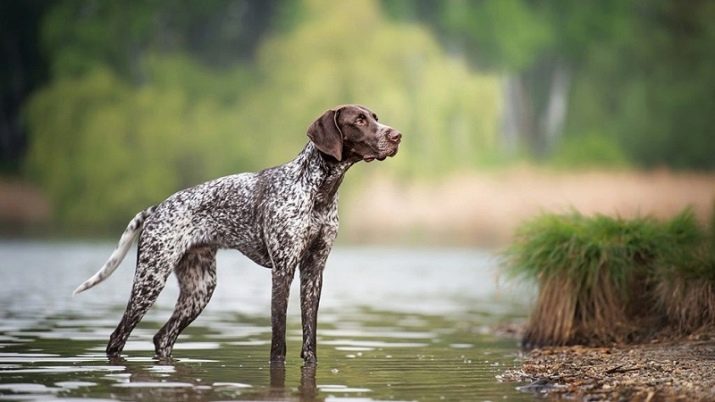

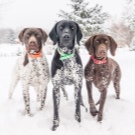
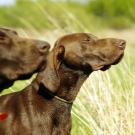
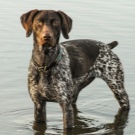
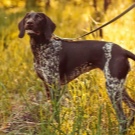
Origin history
The German Kurzhaar is a hunting dog that was bred in Germany. Breeders wanted to get not only an outstanding sport and hunting breed, but also an animal with an attractive appearance and talent for hunting. At the same time, the breed has a surprisingly humble disposition, is well trained and not aggressive towards humans. The described breed was the result of crossing English, Spanish and German dogsAs a result, she adopted from them only the best features. English blood gave the animals a sharp sense of smell and quick wit, the ability to quickly respond to the situation. It is these qualities that dogs are famous for in a country where hunting is considered a real art.
German breeders after long labors were able to get an animal that can hunt small and large game. This is a universal dog that will help bring home not only black grouse, but also deer. The animal perfectly performs the task in water and on land, can move quickly in dense vegetation.
He has well-developed natural instincts, if necessary, the Kurzhaar is easy to train, during which the dog seeks to please its owner, and not just perform the task.
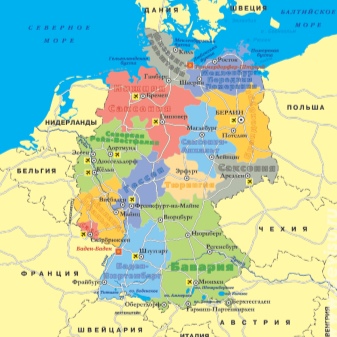
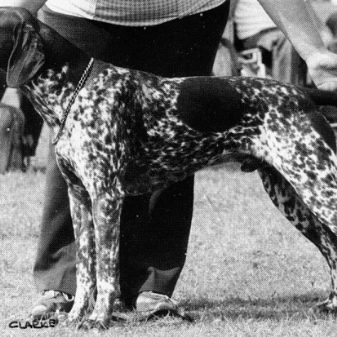
When dog handlers began to understand the pedigree of the breed, they came to the conclusion that kurtshaaras existed in Germany for a long time. Based on the facts gathered, it was possible to conclude that the ancestors of the described breed were brought to the territory of the country from the Mediterranean, where they, in turn, came from Asia. Interest in hunting breeds disappeared when a person got a firearm. Before that, the kurtshaars kept knowing, since these dogs helped them hunt on their lands. Representatives of the species in question belonged to the cops, that is, those dogs that could find in the thicket not only birds, but also large animals.
The ancestors of the Kurzhaar were also cops. Today it is already known that the breed was the result of the crossing of the Spanish Pointer and Bracco Italiano. Initially, the marriage appeared in Germany. Then it was decided to cross the brought dog with a Hanover hound, from which modern Kurzhaars inherited an attractive color of coffee-colored wool and more. It is from the hound that the representatives of the described breed have natural hunting skills that allow you to catch game of any size.

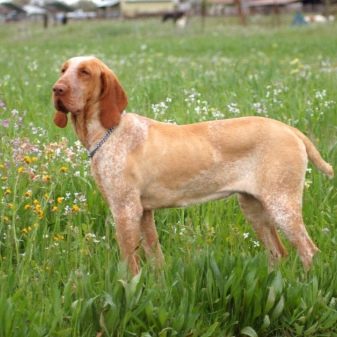
Another breed, Perdigero Burgos, had a great influence on the Kurzhaar. These animals were excellent bird hunters, namely partridges. In Germany, they appeared 3 centuries later than the first breed. After the crossing of the pointer and the marriage, the old German Würtenberg Pointing Dog appeared, which to this day is considered the closest ancestor of the Kurzhaar.
Some breeders believe that many more dog varieties were involved in the formation of the breed. Including:
- Weimar Pointing Dog;
- Hungarian squeezed;
- Dalmatian
- German hound.
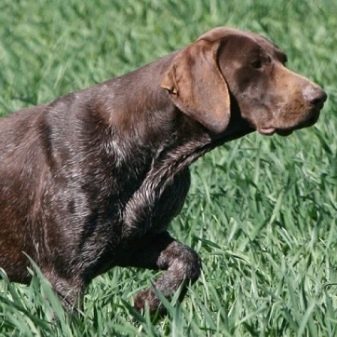
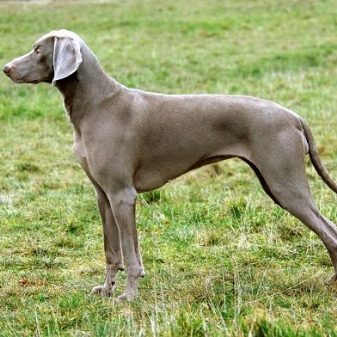
In the old days, the appearance of a dog was not considered the main indicator of breeding for breeding. Much more important were the qualities that dogs demonstrated, since good hounds sometimes cost breeders more than Arabian horses. In the XVIII century, due to widespread standardization, breeders began to pay more attention to stud books and develop common criteria for breeding local species of dogs. This is the time when the drathaar appeared - a breed that was the result of a mixture of the German pointer terrier and dogs with hard hair. A new name for the kurtshaar was required in order to distinguish a dog from a smooth-haired pointer.
At the end of the XIX century, active work was carried out to create pedigree books, the list of which the kurtshaar was entered only in 1872. At the shows you could see the first representatives of the breed, but these dogs played the role of more service than hunting.
By order of the Hanoverian prince, the Kurzhaar tribal book appeared, where you could find the necessary information about the breed.
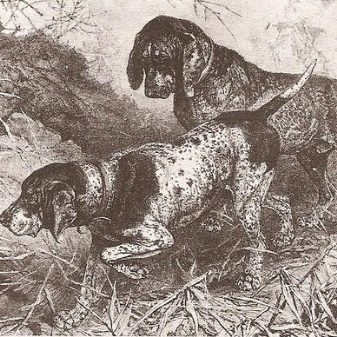
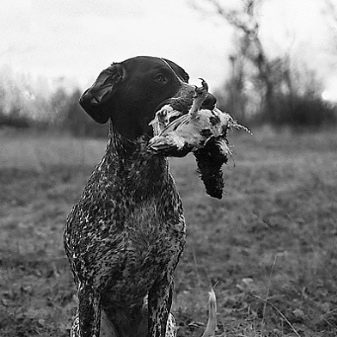
The book gave the first detailed description of the appearance, habits, and abilities of such dogs. Immediately there was a list of tasks with which the animal could easily cope. Since that time, the dog has not changed in appearance, but the breed standard was fixed only in 1912. It was the blood connection with the pointers that endowed the animal with such positive qualities as high speed and a neat physique. Both had a positive effect during the hunt, since the Kurzhaar can even develop impressive speed in the thickets.
The animal was introduced into the United States in 1925. The first to introduce the breed was Charles Thornton, who was subdued by the appearance of the dog and its qualities. He was the first to get a few individuals and began to breed them. Five years later, the Kurzhaars were registered with the American Kennel Club. The animal gained great popularity in the twentieth century. More and more often it was possible to meet dogs at exhibitions, after their photos began to appear in specialized magazines.

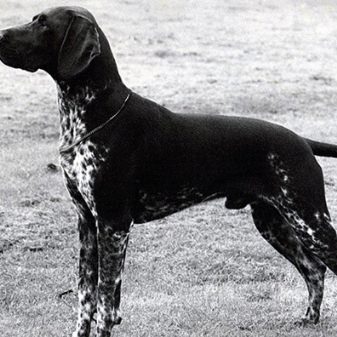
The history of the breed development was not so smooth in Europe, where, along with the Second World War, the danger came to lose breeding individuals from the breeders of the Kurzhaars. Dogs during the war were taken out with money and other valuables to Yugoslavia.Human greed almost caused the extinction of the breed. After the announcement of the Iron Curtain, breeders could not gain access to good breeding animals and were forced to cross those who remained.
In 1948, the English Cynological Club, these dogs were included in the category of guns, and only 20 years later they were recognized as one of the best in terms of hunting. In our century, kurtskhaars take 16th place on the list of AKC. We were able to appreciate the merits of dogs in our country. Today, few people breed these dogs for hunting, more often they keep such dogs as a good and loyal friend, since the hunting industry is slowly disappearing.
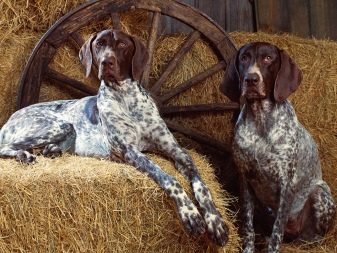
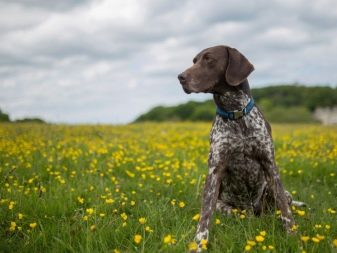
Description
The described dogs should be considered large, but, despite their size, they look elegant and have an athletic body. If you look closely, it is difficult not to notice the strong muscles of the animal, while moving its steps seem light, airy, all due to the fact that the dog has excellent body control. In every movement, the nobility with which this dog was born is noticeable. There is a difference in growth between a male and a female, but it is insignificant. According to the characteristics, the male should be at the withers from 62 to 66 centimeters, and the female - from 58 to 64 centimeters. There is an established indicator for the dimensions of the body. A male usually reaches a weight of 29-32 kilograms, and a female - 20-27 kilograms.
The head of the representative of this breed looks proportionally to the existing body, with clear outlines. Its structure is slightly dry, has a wedge-shaped shape. The skull is made up of wide bones, so it looks rounded.
The occipital protuberance is not very prominent, but there are well-defined eyebrows and a shallow groove on the forehead.
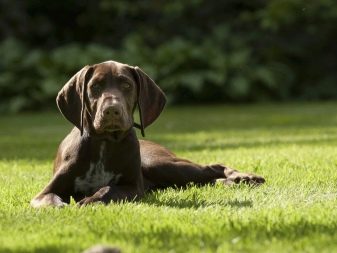
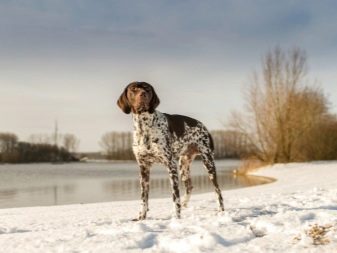
The muzzle narrows to the nose, the skull is wide on the back of the head. In bitches, the shape of the muzzle is more pointed, but males have a hunchbacked nose, which does not stand out very much. Stop is smoothed. The nose can be black or dark brown, if it is a white dog, then it is beige. If there is marble pigmentation on the face, this is not considered a rock defect, it is acceptable by standard. The ears are high. They are at a great distance from each other, flat and hanging. The tips are not pointed, but round, reaching the corners of the mouth. They are neither fleshy nor thin. They are adjacent to the muzzle in front, if the dog is calm, they jump up and down in an excited state.
The eyes of the dog are small, obliquely spaced, with tight-fitting eyelids. The section is oval. If you peer into the iris, you can see the dark brown pigmentation. In young individuals, the eyes may be lighter. The kurtshaar has a scissor bite, so the jaws of this hunting breed are very strong. The teeth are arranged vertically, when both jaws are closed, they are tightly closed.
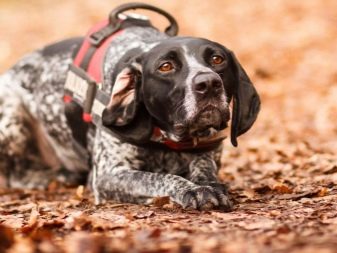
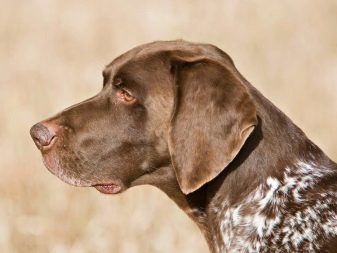
Representatives of this species can boast a long neck, which harmoniously looks with the rest of the body. It is set at an angle of 40 degrees and slowly expands to the shoulder blades. The scruff is slightly convex; a slight bend to the skull can be seen on it. There is no sagging skin on the throat.
If you look at the back of the Kurhaar, it is difficult not to notice a large amount of muscle, due to which the spine is almost impossible to feel, provided that the animal eats well and is healthy. The croup is long and sloping, the chest is well developed. The joints on the elbows are located at the level of the long sternum, a arch is formed under the ribs, the line smoothly bends below and passes into the stomach.

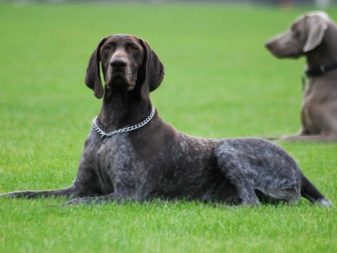
At the base, the tail is thick, then tapers towards the end. It is high, it is cut off half after birth, so that it is more convenient for the dog to hunt and climb through the thickets. If the dog is calm, then the tail hangs when it runs, it is in a horizontal position. The front legs are parallel to the rear. The shoulder blades are tight to the chest, they are quite muscular. If we consider them together with the shoulders, then the forelimbs form an angle of 100 degrees.
The front of the animal is provided with a dense skeleton, the muscles are well developed. The paws are oval or round, at the ends there are pads and claws. On the hind limbs articular angles are pronounced. The hips of the dog are the same muscular, widely spaced. Kurzhaar goes on a sweeping walk. The main burden falls on the hind limbs, so the animal rests on them and pushes away, while the front ones just throws in front of itself. Proud posture persists when running.
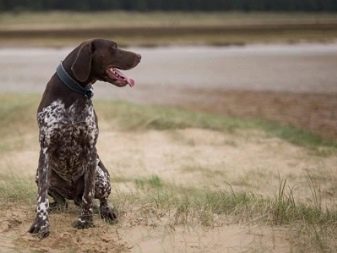

The purebred Kurtshaar fur can not be long. Hair evenly covers the entire body, the average length of the hairs is 1.5 mm. On the head and ears, the coat is slightly softer and shorter.
There are 6 officially accepted colors that are recorded by breeders:
- chocolate specks and white wool;
- coffee shade with a little gray;
- mottled with a coffee tint;
- fully coffee;
- piebald and coffee;
- white with black.
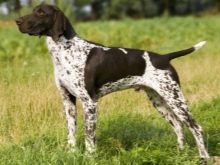
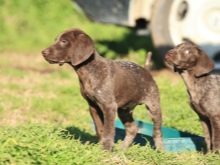
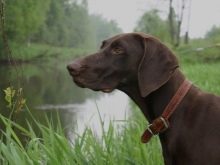
Defects
Describing the representatives of this breed is worth mentioning about possible defects, which are most common:
- incisors may be absent;
- lips are sometimes too thick or thin;
- ears do not fit, may be shorter or longer;
- light pigmentation remains in the eyes even when the puppy has grown;
- the color is completely white;
- the chest is too deep set;
- humpiness is visible;
- croup short;
- there is clubfoot.
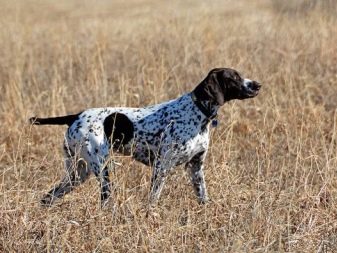
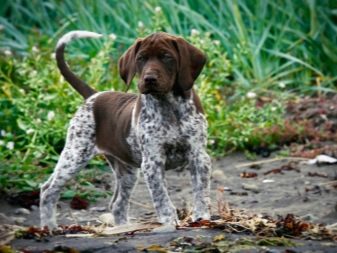
Individuals with some defects are rejected. These include curly hair, yellow or green iris, aggressiveness or cowardice of the dog. Breeders also pay special attention to teeth - they should not have an altered formula, overshot or undershot.
A short neck, poorly developed chest, rectangular feet and cryptorchidism are also the reasons for the rejection of puppies.
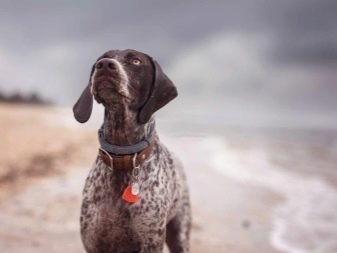
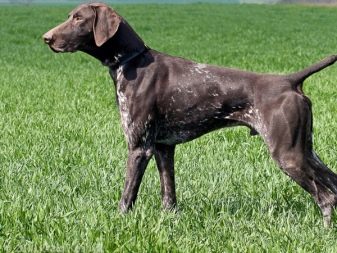
Character
Kurtshaars are unique - they are not only the best friends of a person, but also wonderful helpers during the hunt. These dogs quickly become attached to humans and do not like to be alone for a long time. The animal is ready to take part in any activity. Even if the owner just sits and reads a book, the dog will lie next. Some breeders do not get tired of reminding that such a dog’s loyalty becomes a problem for some, because if you leave it alone for a long period of time, the animal will begin to spoil furniture and shoes from boredom, just to keep yourself busy. That is why busy people are not advised to opt for representatives of this breed.
If the animal does not stay in society for a long time, play with other animals, go for a walk, this will lead to some problems in character and behavior. Dogs turn into cowardly animals, which is completely unusual for kurtshaaram.
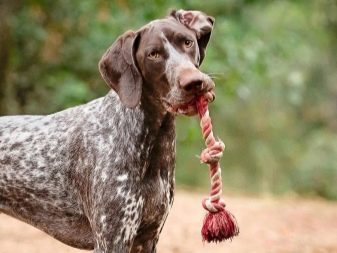
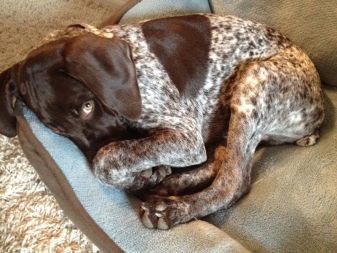
The Kurzhaar may not accept a new member of the family for a long time. He will not show aggression to a person, but will try to ignore him. It takes time for the dog to get used to it. The same applies to strangers who often appear in the house. The time will come when the dog simply stops responding to such a guest as a threat. This is why the Kurzhaars are not very good guards. They can bark loudly, but they rarely bite.
But if there is a choice between security and a true friend for the child, then this is ideal. This dog is ready to play day and night, frolic with the baby, very patient with his pranks.
You should always remember that even though the dog tries to behave very carefully, it has great power and can inadvertently push the child, so leaving them alone is not worth it.
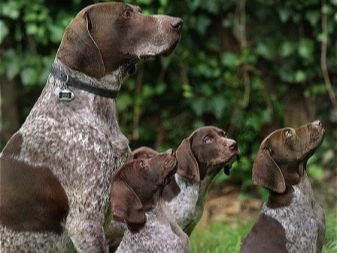
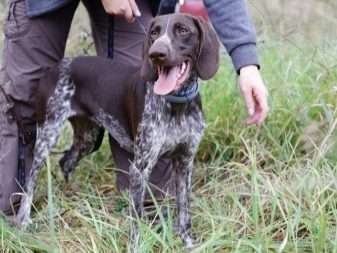
Other pets for the Kurzhaar are also not a problem, unless it is a poorly socialized individual. Dogs of the breed in question do not seek to show their superiority and will not try to take the main place in the house.The only exception is the living together of two males, who will growl at each other in an attempt to prove the right to the existing territory.
If the dog is well-educated, then you can not be afraid to leave him with a cat or a smaller dog in a private room. But the rabbits, rats and other animals that the dog is used to hunting for are not the best option for the neighborhood, although you can also teach them a pet from childhood. You should always remember that instincts laid down by nature appear from time to time in a dog, this also applies to hunting skills. Sometimes such small animals are perceived by them as a toy or prey.
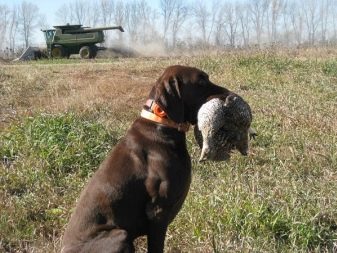

Kurtshaars are distinguished by energy and activity, therefore, for complete happiness they need daily physical exercises. It is advisable to spend several hours with them in the fresh air, choose a small clearing for a walk, where the dog can run around and play enough. It is best to keep a kurtshaar not in an apartment, but in a private house and be sure to take him with you to the forest. A restrictive leash is not the best solution for a walk, the dog will not get any pleasure from such a walking warm-up.
It is not necessary to keep the animal in the house, they can withstand the weather and can feel fine in a warm booth if they are given regular balanced nutrition. The opportunity to run around the possessions at any time gives the dog a frantic pleasure, so you should not put the dog on a chain.
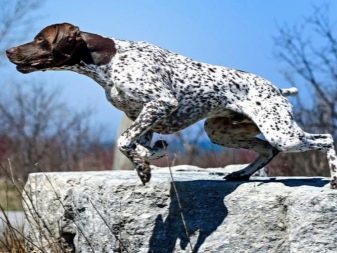
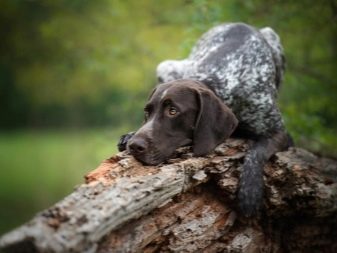
If you limit its freedom, then you can harm the psyche of the animal. As a result, the pet will exhibit unbalanced behavior. In this case, health suffers.
If you leave the dog in the yard unattended, then you must close all possible holes, as representatives of this breed love to run away from control. As soon as the animal smells the game, it will not be too lazy to find its source, in this case even a good fence does not always stop the dog, which can quickly undermine itself or simply jump over the barrier.
Even if the site is well fenced, the dog does not cost anything to develop its own escape plan, which he necessarily implements as soon as possible. Of course, the dog will return home after walking around, but it is better to avoid such situations.
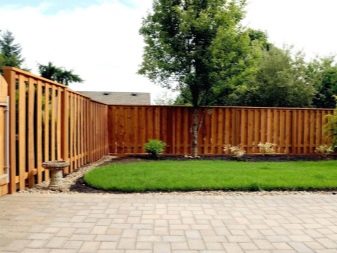
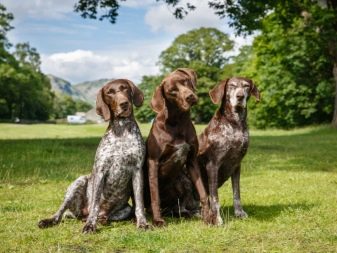
Life span
When a person chooses a friend, assistant and partner in the form of a dog, he is always interested in how much the animal can live. As for the Kurzhaars, on average they live up to 14 years. The main condition for their long life expectancy is good nutrition, constant physical exercise, care and a visit to the veterinarian.
A huge role in the life of the animal plays feed. If it is not balanced, consisting of quality ingredients, then the Kurzhaar will begin to suffer from some diseases inherent in large breeds. Therefore, their food should be rich not only in proteins, but also in vitamins and minerals. The activity of the dog also affects the duration of his life.
Dogs who regularly had the opportunity to walk in the fresh air live longer than those contained in the apartment.
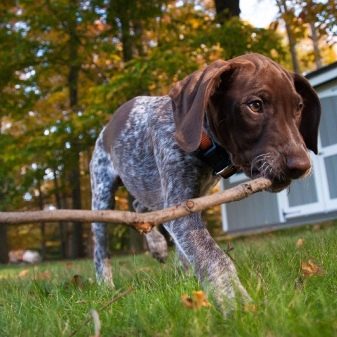
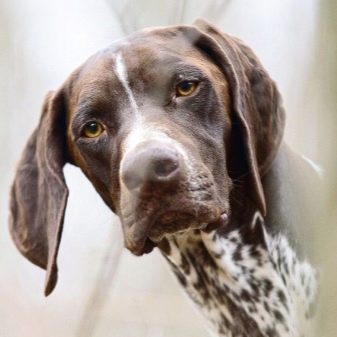
What to feed?
At the kurtshaar, cereals must be present in the diet. Porridge should be cooked in meat broth, but do not need to give them pearl barley. Salt should be absent in any feed, since it does not bring any benefit, the animal can do well without it. If it seems that the food is too fresh, then you can add carrots, pumpkins or even zucchini to it, which are more useful due to the content of not only fiber, but also vitamins, trace elements.
If you want the dog to be healthy, then you should not give her grapes and raisins - they have a bad effect on the intestines, causing increased gas formation.It is also worth excluding any kind of fruit with seeds, chicken bones, since when chewing they can stick into the dog’s esophagus and stomach.
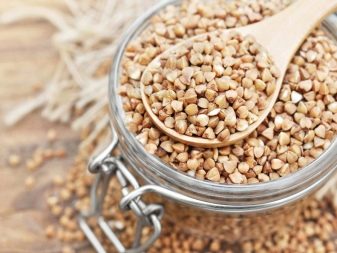
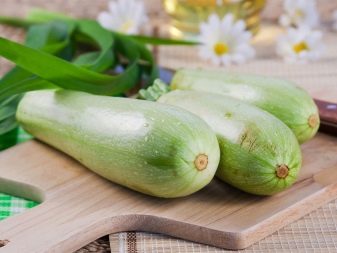
A bad addition to the diet will be yeast dough, onions and garlic. The list of non-recommended foods also includes raw eggs, fatty meat and minced meat. River fish are also not suitable for Kurzhaars, as are sweets. Although some dogs love chocolate, it is extremely harmful to them. Until the puppy is 6 months old, he needs to be fed about 5 times a day, but at the same time, portions should be strictly limited. After the meal is given only three times, but the dog should always have access to clean water.
If you purchase ready-made dry food or canned food, then all attention should be paid to the composition, which must be absent preservatives, dyes, flavorings. A bad product will contain corn and offal. Rice and natural meat are used well. The amount of protein in it should be at least 40%. Among other things, it is desirable that the manufacturer takes care of the mineral and vitamin supplementation of the feed.
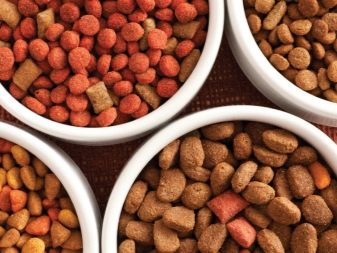
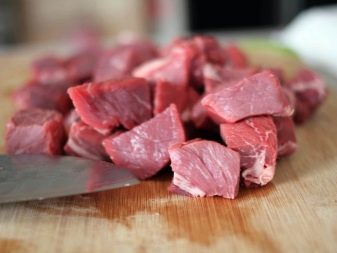
How to care?
Regular grooming is not required for the dog, as it belongs to shorthair breeds. To make the animal feel good, it is necessary to comb out the old hair from the owner once every few weeks. A massage mitten or brush with bristles is ideal for this. If the dog begins to molt, then you can carry out the procedure more often so that his hair does not remain on upholstered furniture and the palace.
It’s not necessary to bathe a pet very often, it can be done once a month or even less when necessary. It’s not so easy to keep a dog in a bathtub, so if you accustom him to the procedure, then from early childhood. You need to understand that if you repeat such grooming too often, it can become dull, because the natural protective layer is washed out of subcutaneous fat.
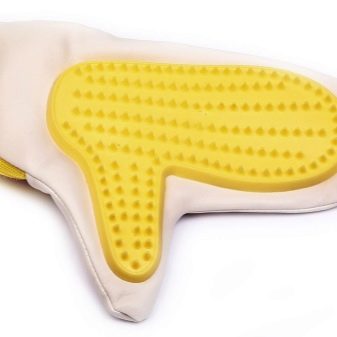
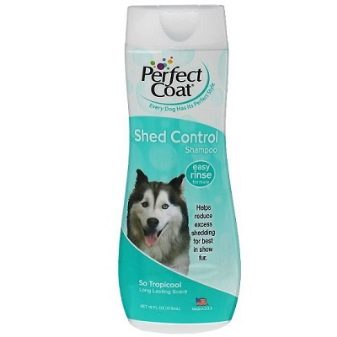
All cosmetics must be specialized. Do not use shampoos habitual for a person to wash a dog.
After the dog is ransomed, windows should be closed in the house to prevent drafts. Often, an animal catches a cold if this advice is neglected.
Not only wool requires care, but also the ears of the animal, inside of which dirt often accumulates. They must remain clean and dry so that the animal feels well. It is enough to take a cotton pad or stick to remove dirt, while not needing to do too deep cleaning. As an aid in pet stores, special ear solutions are sold at an affordable price. To avoid infectious diseases in the dog, which often walks on the street, ear cleaning is required every day.
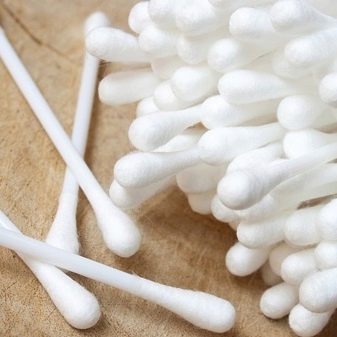
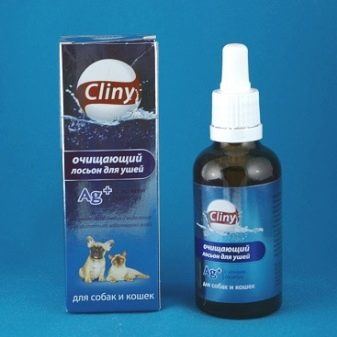
If the pet's eyes began to water, and dirt appeared in the corners, you need to wipe them with a cotton swab dipped in a strong tea brew. If you have serious problems, you should contact your veterinarian. As for the claws, they grind naturally if the dog leads an active lifestyle. If the dog is kept in the apartment, then you will need to buy an additional claw cutter. Too long nails at the dog will cause him discomfort, therefore, sharp edges need to be cut off, and the pads on the paws should be regularly lubricated with oil.
Particular attention must be paid to the oral cavity and teeth, the cleaning of which is required once every 2 weeks. To do this, you can buy not only a brush, but also a special paste in the pet store. When a dog is accustomed to mouth hygiene from a young age, there are no problems with its cleaning.
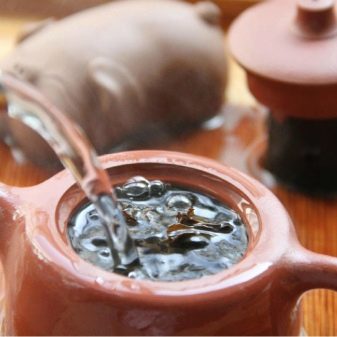
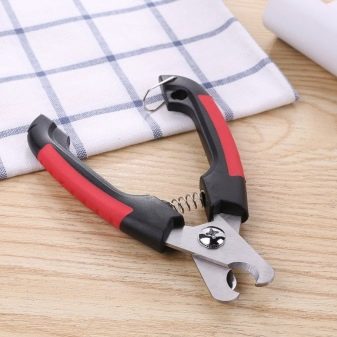
Parenting
Training a kurtshaar at home is a complicated process, but if you approach it correctly, you can raise an animal correctly. It is worth noting that the Kurzhaars are good students and are considered one of the smartest breeds. It’s easy to train them, the main thing is to adhere to the rules developed by specialists. You need to start raising a dog as early as possible. After meeting the puppy, you will need to first establish contact with him and trust. He should learn as much as possible about the world around him, get acquainted with unfamiliar smells around, other animals in the house, and study the area. With the right approach, the animal will grow balanced, unobtrusive and will obey the owner.
In the process of training, you should adhere to the principle from simple to complex, then the dog will understand what they want from him. First, they start with the simplest teams, then smoothly move on to more complex ones.
Each time, it will be necessary to repeat the material passed, since at first the dog can forget the commands.
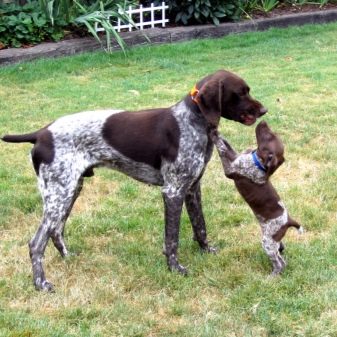
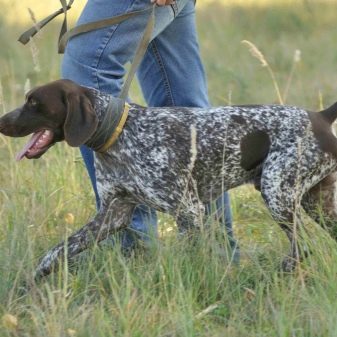
To achieve the result, you need to show the Kurzhaaru who is the boss and leader in the house, the only way the dog can be forced to do something. They rarely show obstinacy, but they like to obey those from whom they feel strength. Because this breed is hunting, its representatives during the training process can be distracted by odors, sounds, and this inattention will interfere until a person establishes his leadership position.
Every day you will need to come up with new tasks for the dog and change training tactics. If you focus on monotony, then the dog will soon get bored with training and she will refuse to accept information. You need to imagine that you are working with a child who should be constantly interested. It’s better to prepare in advance or look at the network a set of exercises, which then change after a certain period of time. The pet should be manifested not only physically, but also mentally - logical tasks for representatives of the described breed are no less pleasant. When a dog is trained specifically for hunting, most of the standard teams are replaced by running with obstacles, that is, they teach him to be hardy, overcome obstacles without slowing down. A treat is given to a dog only after she has earned it.

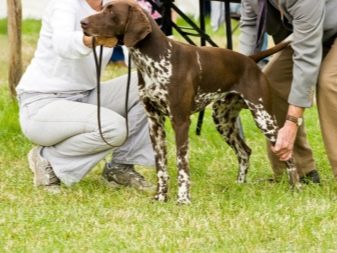
Owner reviews
Numerous owners and breeders distinguish strong immunity from the positive qualities of this breed, so there are not many problems with the Kurzhaars in the process of their maintenance. However, there are several diseases that are most often detected in representatives of this species. Among them are ear infections. Often the sink remains closed, so it is poorly ventilated, bacteria multiply in it. Like all large dogs, Kurzhaars have to deal with joint dysplasia and a lack of iodine in the body. Also among the most common diseases they have are bowel obstruction, eye problems, epileptic seizures and arthritis.
If we talk about ailments transmitted genetically, then they are few. The breeders' great concern is von Willebrand disease, which is associated with blood. You should always remember that these dogs cannot stand being alone, and if they have nowhere to expend energy, then home furnishings are used, namely upholstered furniture, pillows. Very often, the owner’s shoes also suffer from this characteristic character of the dog.
In the next video, you will find interesting facts about the Kurzhaar dog breed.
